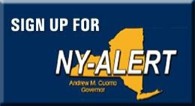Being prepared can you help you lessen or alleviate disaster. Below is a list of aids and tips for given circumstances. While the first rule of any incident is to keep calm, the second step usually involves some action and these pages will help you understand what the correct action is.
Knowing the risks in your area and your home or business will help you respond accordingly in an emergency. Key in your planning is to remember the details, such as the fact that your family may not be together when a disaster strikes so it is important to plan in advance: how you will get to a safe place; how you will contact one another; how you will get back together; and what you will do in different situations.
MYTH: I don't need to worry about disasters where I live.
Emergency preparedness is not only for Californians, Midwesterners and Gulf Coast residents. Most communities may be impacted by several types of hazards during a lifetime. Americans also travel more than ever before to areas with different hazard risks than at home.
Knowing what to do before, during and after an emergency is a critical part of being prepared and may make all the difference when seconds count. Use this site to learn about potential emergencies that can happen and how to prepare for and respond to them.
NY State & Department of Homeland Security Emergency Information Handbook
View / Download PDF
NY State Online Citizen Preparedness Training
Register / Login
Resources Based On Type Of Individual
We have compiled a list of the most comprehensive details of emergencies and their preparation from the best resources on the web, from FEMA, the Red Cross, NYSEG, the National Fire Protection Association, Small Business Administration and much much more. These resources are for Businesses, Disabled / Special Needs Individuals, Schools & Seniors.



